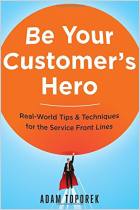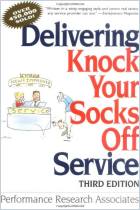This book offers a practical method for building customer relationships. Authors Diane Berenbaum and Tom Larkin have organized each chapter to provide chief principles, practical positive and negative examples, useful exercises to build your skills, and a few summary maxims that recap and underscore main points. The MAGIC customer relations method is not complicated in design, but it takes real effort to master. You can begin implementing aspects of it immediately, and work toward eventual mastery of its principles and skills. This book has the benefit of being action-oriented rather than theoretical. getAbstract recommends it if you are willing to work on the program the authors offer. You will have to do more than just read the book, but that’s a good start.
How to Use that Abracadabra
Personal interactions matter to your customers. A brief conversation can build or destroy your relationship. MAGIC (“Make A Great Impression on the Customer”) is a technique for improving your relationships with your customers. As a customer, don’t you feel great when someone does a job correctly for you, on time and at the right price? How do you feel when they go beyond your expectations? Don’t you feel genuinely happy? Of course – that is the power of Magic.
You want your customers to be happy with your products and services – and your customers want to be happy, too. If you show indifference, reply to their questions by quoting exclusionary policies or even imply that you want to end the transaction, are you creating a magic moment or a “tragic” moment? If your actions help your customers feel understood, show them that they matter and demonstrate that you want to help them, you are building relationships.
Most customers don’t stop buying from companies out of disappointment or anger, but rather because of indifference. Some employee communicated that he or she just didn’t care. Sadly, staff indifference usually comes out of an...



















Comment on this summary or Diskussion beginnen
I can agree with acronym definition of MAGIC in this article as it covers the rules of communication. Remember to treat your customer as you want to be treated.